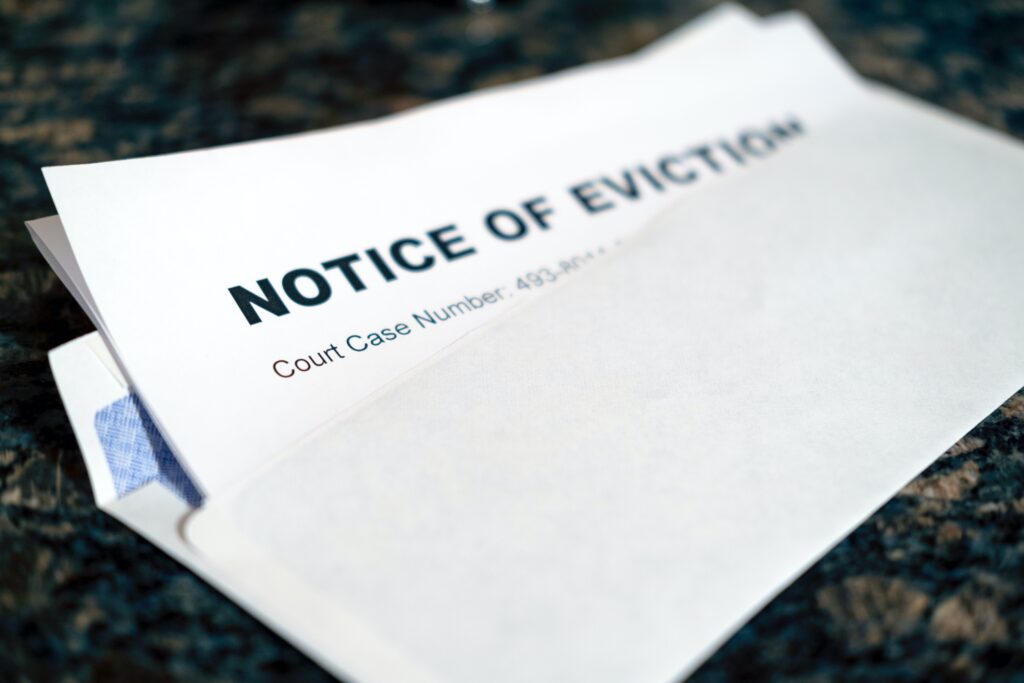In Virginia, evicting a tenant for failure to pay rent can be done by the Landlord through the general district court located in the City or County where your property is located. Here are the basic steps you can take to evict a tenant for failure to pay rent:
- Confirm that rent is actually late. Many leases contain grace periods before rent is considered late.
- If your tenant fails to pay rent on time, you must serve them with a 5 Day Pay or Quit Notice. This notice must served by either the sheriff’s office or by a private process server, and cannot simply be mailed. Further, it must state that if rent is unpaid with the five day period after service of the notice, that the landlord may terminate the tenancy and obtain possession of the premises as provided in Virginia Code § 55.1-1251. You must also notify them that attorneys fees, court costs and additional damages may apply. You can have the tenant served at their last known address, usually the rented property.
- Confirm the date that the 5 Day Pay or Quit Notice was served. After five full days have passed, you may file a Summons for Unlawful Detainer with the General District Court in the jurisdiction where the rental property is located. The Summons for Unlawful Detainer from can be found on the Court’s website here.
- It is recommended that you call the General District Court Clerk’s Office in advance of filing to confirm a hearing date. While talking with Clerk’s Office, confirm the following:
- whether you need to file a Servicemember Civil Relief Act Affidavit with the Summons for Unlawful Detainer (found here);
- Cost of filing the Summons for Unlawful Detainer;
- How many copies of the Summons for Unlawful Detainer you need to provide the Clerk’s Office with along with the original.
- When filling out the Summons for Unlawful Detainer, you have the choice of setting the hearing for dispute settlement as of the date of the first hearing, or requiring the tenant to show up at the first hearing to set a later hearing date if the eviction is disputed. If you are unsure whether the tenant has a valid defense to the eviction, requiring the tenant to show up at the first hearing to set a future hearing date may be the way to go. You can request a bill of particulars and grounds of defense which will provide you information on any defenses the tenant may have.
- Filing fees vary, but it is recommended that you request that the Sheriff’s Office serve the Summons for Unlawful Detainer when you file it. Service of Process by the Sheriff’s Office currently costs $12.00 and is added to the filing fee paid to the Clerk of Court.
- Attend the hearing at the date and time you requested in Step #4. If the tenant does not show, you can request possession of the property.
- If the tenant does show up for the hearing, either set a future hearing date or argue your case at that time.
- If the Court finds in your favor, it will enter an order of possession of the property, requiring the tenant to vacate.
- General District Court orders have a ten day appeal period. If no appeal is perfected by the tenant, you can file a Writ of Possession with the General District Court. This authorizes the Sheriff to physically remove the tenant and their possessions from the property.
- The Writ of Possession is served by the Sheriff on the tenant, who then has 72 hours to vacate the property.
- If the tenant fails to vacate, you can arrange for the Sheriff to physically remove the tenant and their possessions.
- Once the tenant has vacated the property or been removed, it is important to have a locksmith change all the locks to prevent the tenant from re-entering the property.
Please note that this is intended as a general outline of the eviction process. It can be handled entirely by you, as landlord, if you wish. However, we recommend consulting or hiring an attorney experienced in evictions. If you would prefer hiring an attorney to assist you in evicting a tenant, please give us a call. We’re happy to help.






